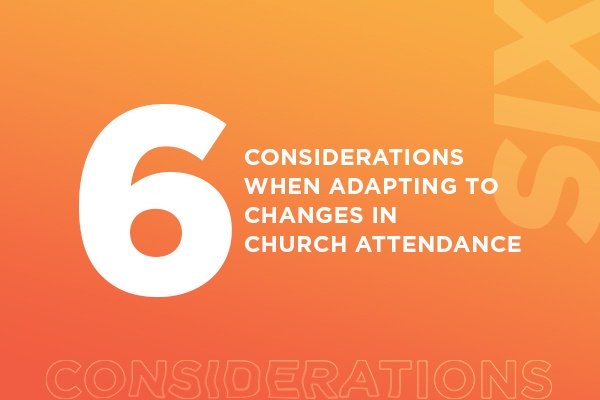Sports, vacations, recreation. So many things are filling people’s lives these days, and unfortunately, it doesn’t always leave room to attend church on Sunday morning. While other reasons may exist, this is the main factor we see in why church attendance among the faithful has shifted so dramatically in the past 10 or 15 years.

When pastors come to understand this shift has occurred, they usually don’t waste any time in going back to their staff to share the news and come up with ideas of what they can do about it. While we have seen some church leadership try to lay the blame of decreased attendance all on attendees, wise church leaders know that’s only part of the problem.
Churches cannot continue to only offer services at 9:00 a.m. and 11:00 a.m. on Sunday morning. Those are still viable times, however they shouldn’t necessarily be the only times.
For example, if a family is traveling or has children that participate in sports or extracurricular activities, they may not return home until the late afternoon on Sunday. If their church does not offer a late Sunday afternoon service, then the fact that they don’t attend church that day is partly their fault and partly the church’s fault.
Here are some things for churches to consider when it comes to adapting to the shift in church attendance:
- Take full advantage of every minute. When pastors do have church attendees in front of them, they need to leverage every moment. Your time in the worship service becomes even more precious if you really only have them once or twice each month.
- Consider flexibility in worship times that you’ve never thought of before. There are many other good options besides Sunday morning, such as Saturday services or Sunday afternoon services. Late on Sunday is an ideal time and offers flexibility for families who are away for the weekend but back in time to attend late in the afternoon, as mentioned above.
- Make the sermons easily accessible. Your preaching should be more available than ever, and not just on your website. Leverage various social media channels and email. A weekly “in case you missed it” email or newsletter can be a great option.
- Develop consistency in small groups. With the shift in attendance on worship, we’re not seeing the same shift in attendance of small groups. Small groups are still a very effective way to help people dive deep and keep them attached to the church. Even those who are not in church every single Sunday will still be active and faithful in the life of the church.
- Employ all giving options. Make sure you’ve developed the full spectrum ofgiving options, especially electronic versions, such as online giving, giving through ACH, and mobile devices. Just because someone can’t attend on Sunday morning doesn’t mean they cannot continue to give consistently via their mobile device.Make sure those options are available so generosity does not suffer.
- Teach a proper view of church and Sabbath. Teach your church what it means to actually be there, andmake sure they know why it’s so important to worship with other believers on a regular basis. Remind them that Sabbath can include both Saturday and Sunday.
It will be interesting to see how church attendance changes over the next 10 or 15
years. This trend will likely continue, which is why it’s so important for churches to get a true view of what’s happening now, so they can prepare and evolve as church members do the same.
To learn more about how to adapt to a shift in Church attendance, download our free eBook, The Big Shift: Ways to Engage Less Engaged Churchgoers.
Share this
You May Also Like
These Related Stories
.png)
The Truth About Dechurching in 2025: What Every Church Leader Needs to Understand

The Giving Conversation That Changes Everything


No Comments Yet
Let us know what you think